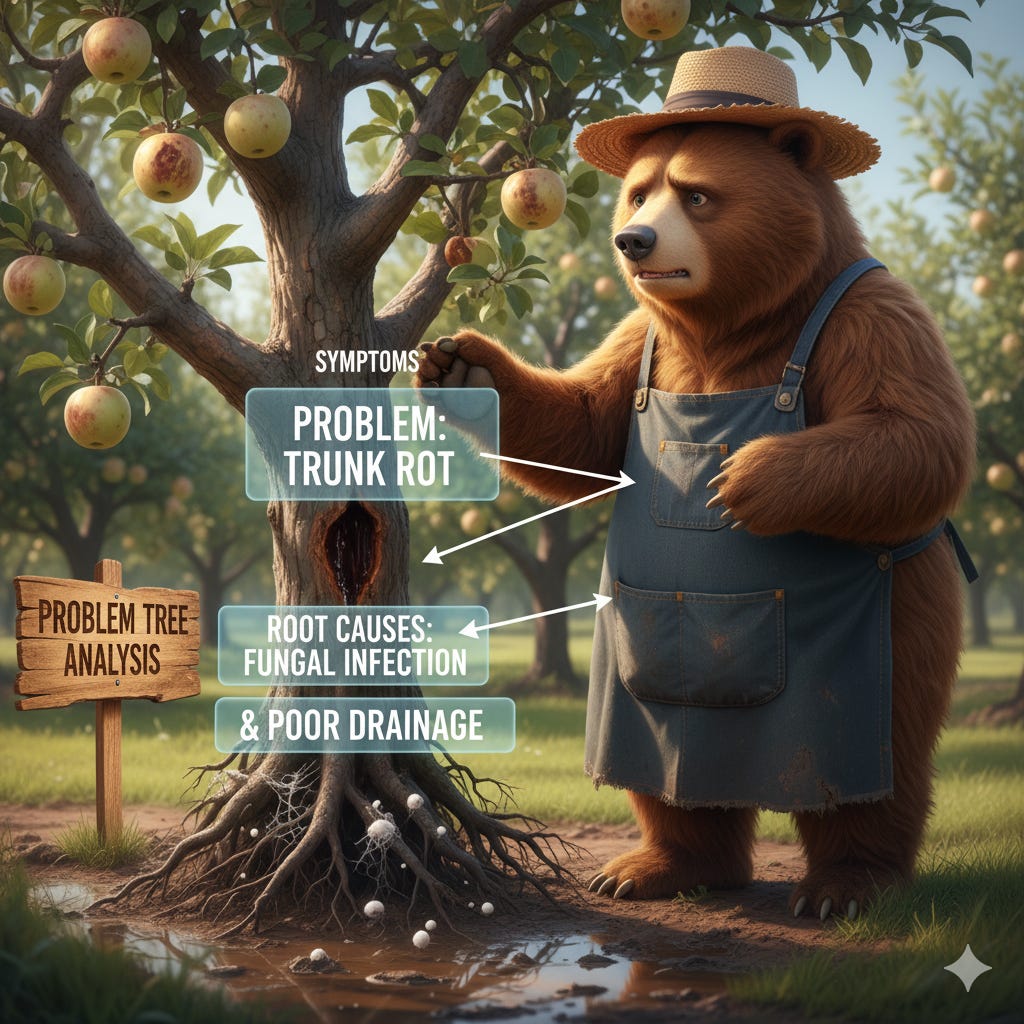Defining a problem clearly is essential for practical solutions, yet many teams struggle to frame issues accurately. Common challenges include confusing symptoms with root causes, differing stakeholder views, and assumptions without evidence. Tools like problem tree analysis help overcome these hurdles by visually separating symptoms, the core problem, and root causes, enabling focused and lasting solutions.
Typical Challenges in Defining a Clear Problem Statement
🔹 Vague or Overly Broad Framing
Problems often appear as symptoms rather than real issues. For example, “Sales are low” is a symptom, while the root problem might be “Product positioning does not match target market needs.” Broad problem statements hinder actionable steps.
🔹 Confusing Causes with Problems
Mistaking causes problems and lead to misdirected solutions. “Employees are unmotivated” is a cause, versus “High staff turnover” as the problem.
🔹 Confusing Effects with Problems
Describing effects instead of problems can cause misunderstandings. For example, “Customer complaints are rising” is an effect of the problem “Poor service process design.”
🔹 Different Stakeholder Perspectives
Stakeholders’ views vary: managers see “Low productivity,” employees cite “Unrealistic workload,” and customers mention “Slow response time.” Without alignment, defining the problem is fragmented.
🔹 Too Many Assumptions and Biases
Jumping to conclusions or solution biases—like insisting on “We need a new IT system” without identifying root inefficiencies—derail problem clarity.
🔹 Lack of Data or Evidence
Relying on anecdotal evidence breeds disagreement and weak problem definitions.
🔹 Ambiguous Boundaries
Unclear scopes—internal vs. external or short-term vs. systemic issues—cause unfocused discussions.
🔹 Emotional or Political Influences
Agendas or a fear of blame lead to vague framing, such as “communication gaps,” instead of addressing more serious issues, like “toxic leadership.”
🔹 Complexity and Interconnectedness
Multiple linked causes and effects make it hard to prioritize core issues without structured analysis.
🔹 Lack of a Common Language
Technical jargon or abstract phrasing can confuse “Suboptimal process efficiency” with “Processes take too long.”
How Problem Tree Analysis Works
Problem tree analysis is a visual tool for dissecting complex issues. It categorizes symptoms, the central problem, and root causes in a cause-and-effect diagram.
Identify the Core Problem: Define the central issue clearly and place it in the diagram's middle (or root).
List Symptoms: Above the core problem, note observable effects or symptoms caused by the problem.
Explore Root Causes: Below the core problem, list factors that lead to or cause the problem.
Map Connections: Draw arrows linking causes to the problem and the problem to its effects.
Validate With Stakeholders: Collaborate with relevant groups to refine the tree, ensuring all perspectives and data are included.
Example of Problem Tree Analysis
Scenario: A software company faces declining customer satisfaction.
Core Problem: Poor software usability.
Symptoms (Effects) above:
Increased customer complaints
Higher customer churn
More support tickets
Root Causes below:
Inadequate user testing
Lack of user feedback integration
Complex interface design
Insufficient training for users
Arrows link the root causes to the core problem and from the core problem to symptoms. This visualization clarifies that addressing only rising complaints (a symptom) without tackling usability issues and their causes will not fully resolve the problem.
Benefits of This Approach
Clarifies what to focus on by separating symptoms, problems, and causes.
Builds consensus by involving multiple stakeholders.
Enables data-driven decision-making.
Helps prioritize root causes that will have the most significant impact.
Avoids jumping prematurely to solutions.
By incorporating problem tree analysis into problem definition, teams gain a clear, common understanding that prevents confusion and misdirected actions — paving the way for effective, sustainable solutions.


